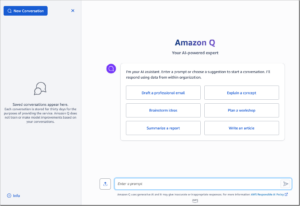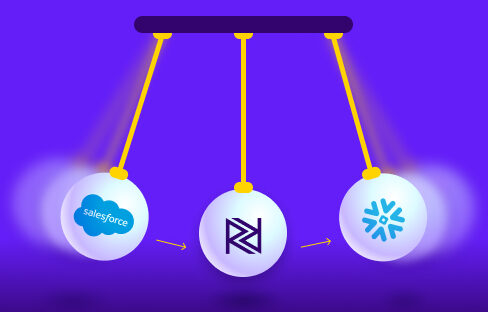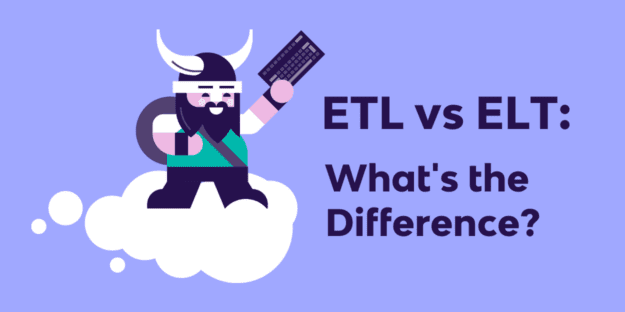Over the last two decades, the data industry has been at the forefront of numerous technological transformations. The shift from on-premises infrastructure to cloud-native technologies has enabled organizations to scale rapidly. One thing that has remained the same is that change invariably brings improvement.
Among these advancements, the introduction of Generative Artificial Intelligence (GenAI) is the most significant.
By 2025, it is estimated that 10% of all data will originate from GenAI, leading to greater automation, efficiency, and productivity.
One notable advantage of GenAI is its ability to expedite problem-solving, particularly in managing data pipelines. For example, non-technical users can input natural language prompts to generate SQL queries, retrieving specific data points without requiring engineering assistance.
The current enthusiasm for developing GenAI applications is understandable. GenAI can automate complex data analysis, enhance customer service with intelligent chatbots, and drive innovation through predictive analytics and personalized recommendations.
In this article, I will explore how you can utilize unstructured data to build GenAI applications and share how to use them if you are building applications.
Unlocking the Value of Unstructured Data
Historically, unstructured data—such as text documents, emails, images, and social media posts—posed significant challenges for extracting insights due to the absence of a predefined data model. Traditional data processing tools were predominantly designed for structured data, limiting their effectiveness with unstructured information. However, the rise of GenAI and Large Language Models (LLMs) has revolutionized this domain.
The Transformation with GenAI and LLMs
Enhanced Data Processing
Generative AI and LLMs like GPT-4 have introduced sophisticated natural language processing (NLP) capabilities to understand and generate human-like text.
These advancements enable:
- Contextual Understanding: LLMs can interpret the context and semantics of unstructured data, extracting relevant information and insights.
- Content Summarization and Generation: They can summarize extensive documents, generate reports, and create new content based on input data.
- Sentiment Analysis: LLMs can assess the sentiment of textual data, offering valuable insights into customer feedback and market trends.
Integrating RAG Workflows and Data
The emergence of Retrieval-Augmented Generation (RAG) workflows further maximizes the value of unstructured data. RAG leverages LLM capabilities alongside retrieval techniques, allowing systems to access relevant documents or data from extensive corpora and generate informed responses or insights.
Leveraging Amazon Q and Snowflake Cortex
Platforms like Amazon Q and Snowflake Cortex streamline the integration and utilization of unstructured data within RAG workflows:

Amazon Q: This service facilitates natural language interactions with data, interpreting complex queries and providing answers based on vast data repositories, thereby simplifying the extraction of insights from unstructured sources.

Snowflake Cortex: Cortex utilizes Snowflake’s data platform to integrate and analyze structured and unstructured data. It offers tools for building and deploying machine learning models, including LLMs, enabling businesses to extract value from their data effortlessly.
8 Data Sources for a Useful GenAI Application
1. Intercom: Customer Discussion Analysis
Intercom is a versatile customer service platform enabling conversations across different channels, including chat, email, and social media. Various companies, including Microsoft, Amazon, and Meta, have used Intercom for key customer insights.
Intercom uses sophisticated natural language processing (NLP) techniques and sentiment analysis, allowing you to categorize and analyze these conversations. These discussions highlight customer needs, pain points, and preferences. Product development teams can also gain valuable feedback on which features customers prefer, whereas marketing teams can prepare campaigns that match customer sentiments.
Utilizing Rivery, you can seamlessly integrate data from Intercom into GenAI applications for comprehensive customer discussion analysis. A study from McKinsey showed that genAI for customer support can boost team productivity by 40-45%, demonstrating its importance in 2024.
2. Salesforce: Opportunity Free Text Analysis
Salesforce is a customer relationship management (CRM) platform with powerful capabilities for managing sales pipelines and customer interactions.
Your sales representatives can document interactions with prospects and customers in free text fields. These fields contain qualitative information that supplements the quantitative data in CRM systems. Analyzing the language used by customers in their interactions can reveal emerging market trends, customer needs, or areas where additional support or customization is required.
With Rivery’s assistance, this analysis will create useful GenAI applications that improve sales forecasting and personalized marketing.
Wipro is using GenAI to simplify sales processes and capabilities, aiming to become an AI-first business with over 220k staff trained in AI. US-based Fifth Third Bank also utilized Enlighten AI by NICE to understand customer intent.
3. HubSpot: Opportunity Free Text Analysis
HubSpot is another widely used CRM platform where sales representatives document interactions with prospects and customers in free text fields. Companies like Weight Watchers and Accenture use HubSpot tools to improve business functions.
HubSpot has a suite of tools beyond CRM, including marketing automation, content management, and customer service functionalities. These ensure a seamless experience for sales, marketing, and service teams.
With Rivery’s help, you can examine free text analysis and discover hidden insights to improve customer satisfaction. This helps to build more useful, customer-focused GenAI applications. Microsoft Azure, IBM Watson, and Google Cloud can also use genAI to break down free text analysis.
4. Zendesk: Support Ticket Text Analysis
Zendesk’s support ticket system enables you to manage and resolve customer inquiries and issues. The top companies using ZenDesk for this key data include Airbnb, Skyscanner, and Lush.
The tool offers multichannel support, automation and workflow tools, a self-service portal, and reporting and analytics.
You can use Rivery to break down support ticket text analysis from Zendesk. This provides insights into common issues and customer sentiment, which allows for proactive support measures. Furthermore, this analysis helps you train GenAI applications to automate support processes and deliver personalized assistance to customers.
5. Jira: Support Development Analysis
Jira is a powerful project management tool and platform for tracking technical issues and bugs. The platform lets you define custom workflows to reflect their unique development processes. The top businesses using Jira software include Ubisoft, Time Warner, and Wells Fargo.
Jira integrates with many tools used in software development. These include continuous integration and delivery (CI/CD) tools, testing frameworks, and collaboration platforms. Companies like GitLab, Azure DevOps, CircleCI, Jenkins, and Bitbucket offer similar features.
With Rivery’s help, you can analyze the text data within support tickets to help development teams prioritize and address issues efficiently. This improves the software and user experience on GenAI applications.
6. Github: Discussions Analysis
GitHub is a leading platform for software development collaboration and version control, where your developers can discuss code, report issues, and propose changes.
Analyzing discussions delivers insights into emerging trends, common issues, and future developments in software development. This informs you on advancements in programming languages, frameworks, and technologies. Tools like Stack Overflow, RedMonk, Slash Data, and JetBrains provide similar data.
In addition, the data gained from GitHub can train GenAI applications to identify patterns, predict future developments, and provide intelligent recommendations. Rivery is the best option for gaining valuable insights to create useful GenAI applications.
7. Capterra: Customer Review and Comments Analysis
Capterra is a popular platform where customers leave reviews and comments about various software products and services.
Analyzing customer reviews and comments on Capterra reveals insights into customer satisfaction, sentiment, and preferences regarding different software solutions. This highlights strengths and weaknesses from the customer’s perspective, enabling you to refine products, services, and marketing strategies. Tools like TrustRadius, Crozdesk, and G2 provide similar data.
You may use this data to train GenAI applications to analyze customer feedback more effectively, allowing automated sentiment analysis and feedback categorization. Research shows that GenAI models can access sentiment in multiple languages and feelings like nostalgia and loyalty with precision levels of over 95%. As a result, genAI is incredibly effective at analyzing customer reviews.
8. Social Media Sources
Social media platforms like X, Facebook, LinkedIn, and Instagram are rich sources of customer feedback, sentiments, and trends.
Examining comments and mentions provides valuable insights into customer perceptions, preferences, and behaviors. This details the effectiveness of your marketing campaigns, monitors brand sentiment, and identifies emerging trends in your industry.
Srinklr AI+ integrates with the latest GenAI tools to deliver customer insights and predictive analysis, ensuring high-quality social media management. Bandwatch, Hootsuite, and Sprout Social can also provide this data.
Furthermore, you can use Rivery to gain critical insights into your social media data. You may use this data to improve customer service and relationship management on GenAI applications.
Moving Forward
Generative AI and LLMs have unlocked the potential of unstructured data, making it an invaluable resource for deriving insights and driving innovation. Platforms like Amazon Q and Snowflake Cortex, combined with RAG workflows, have simplified the integration and analysis of this data, transforming how businesses operate—considering what other unstructured data sources your organization might leverage as we stand on the brink of this new data-driven era.
By establishing reliable data pipelines and utilizing RAG workflows, you can quickly put this data to use, enhancing decision-making, optimizing operations, and uncovering new opportunities for growth and efficiency.
The future of data is here—are you ready to harness it?
Minimize the firefighting. Maximize ROI on pipelines.





